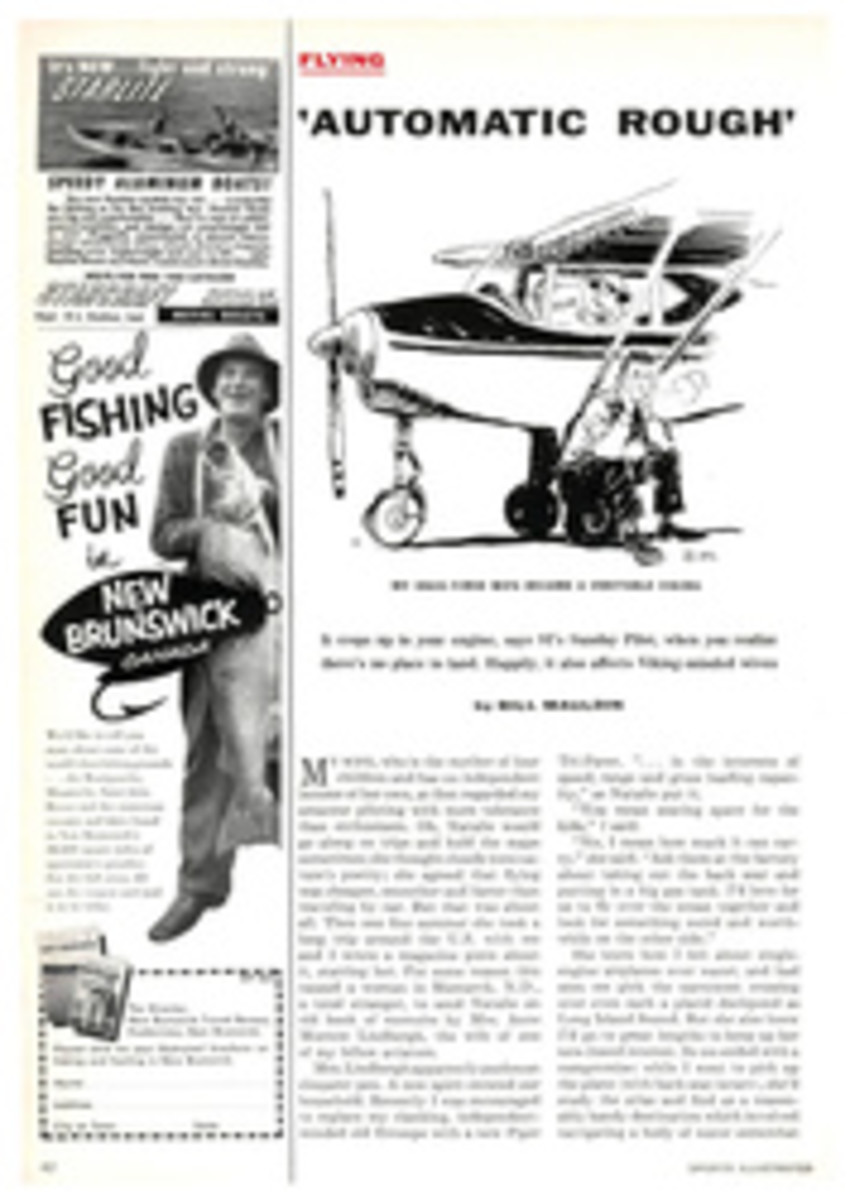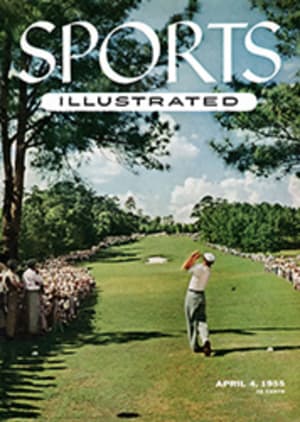
ON TO AUSTRALIA!
It's a long way from Mexico City to Melbourne—19 months and 8,000 miles to be exact—and much can happen to change the global athletic picture between the second Pan-American Games that wound up here last weekend and the next Olympic Games, scheduled to be held in the Australian city in November 1956. But one thing was clear as the athletes of 22 American countries gathered in the vast University of Mexico stadium for the closing ceremonies last Saturday. The results of this two-week "Olympics of the Western Hemisphere" will have a more important bearing on the outcome of the next Olympics than any other athletic meet until then.
The same could not be said of the first Pan-American Games held in Buenos Aires in 1951. (Actually, the first Pan-American Games were held in 1937 in Dallas as part of the Greater Texas and Pan-American Exposition. Plans to renew the games annually were ruined by World War II.) In 1951 few outside Latin America paid the regional sports carnival much heed, including the U.S. Olympic Committee which sent only 127 athletes and few stars. As a result, the U.S. finished a lackluster second behind Argentina.
This time the U.S., remembering the strong Soviet challenge to American Olympic supremacy at Helsinki in 1952 and looking ahead to the 1956 Olympics, sent a star-studded contingent 274 strong. Although college studies, Golden Gloves tournaments and conflicting NCAA swimming and wrestling championships prevented some U.S. stars from coming to Mexico, Dan Ferris of the AAU called the squad the "most powerful we ever sent abroad in an off-Olympic year."
The presence of so many crack Olympic-bent U.S. athletes lent such impetus to competition that in almost every sport from track and field and swimming to volley ball and water ballet, Canadians and Latin Americans were vying with U.S. rivals in a record-breaking orgy not seen on this continent since the Olympic Games at Los Angeles in 1932. Thirty-two games records were set. Seven world records were broken, five by Americans. Four of the American marks were by Weightlifters Tommy Kono, Charles Vinci and Norbert Schemansky. Venezuelan Cyclist Anthony Di Michelli broke the Soviet-held 1,000-meter record. In track and field American Lou Jones did 45.4 in the 400 meters. Brazilian Adhemar Ferreira da Silva sailed so far in the hop, step and jump that he broke the Soviet-held record by more than a foot.
That the U.S. would be the unofficial overall winner here was as much a foregone conclusion as the death of the bull in a Plaza Mexico corrida. The big question was: will this U.S. team prove to be good enough to hold off the U.S.S.R. in the Olympics? With the games over, the question still begs a definite answer. Just as Russia piled up an overwhelming team victory in the quadrennial European Games last summer in Switzerland, so did the U.S. run up an impressive triumph here.
In track and field the U.S. not only won 16 of 22 men's events but displayed strength in depth by collecting by far the largest number of seconds and thirds. The overworked Mexican band played The Star Spangled Banner so often for individual Yanqui medalists that even the most patriotic American must have secretly wished for a change of tune. As it was, a minority of rabid Mexican fans took to whistling (Latin way of booing) at Estados Unidos successes and madly cheering anyone from any other nation even if he was only leading a qualifying heat.
Impressive as the American triumph seemed, both over-all and in individual events, it was not a cause for wild rejoicing. American performances in several sports left much to be desired.
Argentina, never a leading contender in the Olympics, beat the U.S. in boxing, cycling, rowing and water polo and tied in wrestling. While the U.S. had legitimate alibis in a few instances, nevertheless the defeats do not speak well for the depth of top-flight material in these sports. Mexico beat America's best in modern pentathlon (see pictures below). Even in its own national sports the U.S. put on disappointing shows. In basketball the U.S. team lost a game to Argentina and gained the overall games title only on a technicality (Brazil, Argentina and the U.S. tied for first, and the U.S. was declared the winner after a point-spread comparison). In baseball the American team had to settle for second place behind the Dominican Republic. ("Fortunately," cracked one official, "baseball is not yet an Olympic event.")
Even in track and field the U.S. displayed its old Olympic weakness in races over 800 meters. Wes Santee was upset by a previously unknown Argentinian named Juan Miranda (see page 62) in a slow (3:53.2) 1,500 meters. Olympic Steeplechase Champion Horace Ashenfelter finished second to Argentinian Oswaldo Suarez in the 5,000 meters. Suarez also won the 10,000 meters. In these distance races the U.S. could blame the oxygen-scarce altitude (SI, March 28), but the fact remained that not even Santee, fastest miler in the world today, nor Ashenfelter, only American since 1908 to win an Olympic event longer than 800 meters, could give proof in international competition that they could be counted upon for gold medals at Melbourne.
In swimming, U.S. men did well—with Olympic stars Clarke Scholes and Jimmy McLane and 16-year-old Frank McKinney Jr. winning races in good time—even though many fine swimmers were absent at the NCAA championships. However, the American girls did little to warrant much more hope for them at Melbourne than at Helsinki, where they won only two third places in five races. The big sensation of the women's aquatic events was the showing of the small Canadian team. Beth Whittal of Montreal, a Purdue sophomore, put on the most amazing individual performance of the entire games by 1) winning the 100-meter butterfly championship, 2) less than 15 minutes later winning the 400-meter freestyle title and 3) 45 minutes after that swimming a leg with the second-place medley relay team. Canadian Coach Tommy Walker exulted: "Beth has the greatest potential of any swimmer I have ever seen."
Despite the several conspicuous U.S. weaknesses, American fans had things to cheer about. Real progress seems to have been made in a few lesser Olympic sports, such as fencing and gymnastics.
Individually, a few promising U.S. athletes came to the fore in a way that suggests they may be at peak performance by Olympic time. Not only has 19-year-old Arnold Sowell emerged as the likely successor to aging Mai Whitfield in the 800-meter run, but Lon Spurrier, who pressed Sowell to the tape in the Pan-American 800 and who set a new world record in the half mile last Saturday (see EVENTS & DISCOVERIES), is a strong running mate. Seldom has the U.S. been blessed at one time with three such fleet quarter-milers as Lou Jones, Jim Lea and Jesse Mash-burn, 1-2-3 finishers in the record-breaking 400. Sprinter Rod Richard came within a tenth of a second of world records in both the 100- and 200-(around bend) meter dashes. Josh Culbreath was only one second shy of tying the world record (held by Russian Yuri Lituev) in the grueling 400-meter hurdles, Roy Range and John Bennett both exceeded 26 feet in the broad jump, the U.S. 400- and 1,600-meter relay teams won handily, and old Olympic stand-bys like Hurdler Jack Davis, Shot Putter Parry O'Brien, Pole Vaulter Bob Richards, Discus Thrower Fortune Gordien and Javelin Thrower Bud Held all came through in a style that indicated they would carry weight at Melbourne. In the classic decathlon, big, young Rafer Johnson, a UCLA freshman, seemed likely to threaten Bob Mathias' world decathlon record until he lapsed into near exhaustion in the last few events.
Among American girl athletes, Olympic Diving Champion Pat McCormick (see page 54) repeated her Olympic wins in the springboard and platform dives and expects to crown her career by doing it once again at Melbourne. Blond Jeanne Stunyo was a close second in the springboard dive and looked like a coming champion. Another girl to watch is High Jumper Mildred McDaniel, who tied both the American and Olympic records and came within a breath of tying the Soviet-held world record.
Nevertheless, for the American athletes who want to do well at Melbourne, a full year and a half of hard training and competition lies ahead. By then some of our present shining lights may be dimmed, and others glowing in their place. As Swimmer Clarke Scholes, an Olympic and Pan-American champion, said ruefully: "Hell, there's so many good swimmers around back in the States I'll be lucky even to make the Olympic squad."
More than anything else the 1955 Pan-American Games turned out to be a valuable proving ground of competitive heart and sinew that should pay off in the best Olympic squad in U.S. athletic history. A good many returning heroes agreed with Lou Jones who said after breaking the world 400-meter mark: "I can't exactly explain what happened, but something moved me." The hope is that whatever it is, it will keep on moving them.
FIVE PHOTOS
MARK KAUFFMAN; GEORGE SILK; JUAN GUZMAN
Joaquin Capilla of Mexico duplicated Pat McCormick's twin triumph in men's diving. Here he spins and twists with matchless control in dive from three-meter board.
PHOTO
MARK KAUFFMAN; GEORGE SILK; JUAN GUZMAN
BAREFOOT MEXICAN BOYS in big hats brace themselves along the slippery banks of Cuemanco Canal at Xochimilco and watch impassively as countrymen in fours-with-coxwain competition vainly try to stave off defeat. Argentina was ultimate victor
PHOTO
MARK KAUFFMAN; GEORGE SILK; JUAN GUZMAN
BARE-TORSOED BRAZILIAN goalie lunges out of turbulent water in front of net to deflect Mexican shot in water polo game. Shot appears to score despite goalie's try, but drops before goal mouth. Brazil won 7-1, but lost to Argentina in final standings.
FIVE PHOTOS
MARK KAUFFMAN; GEORGE SILK; JUAN GUZMAN
MODERN PENTATHLON: Jose Perez Mier of Mexico won none of the five pentathlon events (in which he is shown performing below), but great over-all consistency earned him the championship, led Mexico to team title. Never better than fourth (swimming) nor worse than seventh (cross-country running), he nosed out erratic Edgar O'Hair of U.S., who finished first in shooting but fifteenth in fencing, by margin of one point.
PHOTO
MARK KAUFFMAN; GEORGE SILK; JUAN GUZMAN
HAPPY, EXHAUSTED Juan Miranda (right) of Argentina clasps Mai Whitfield and grins with weary delight after his stunning upset of Wes Santee and Fred Dwyer in the Pan-American 1,500-meter run. Friends hold tottering Miranda erect as an Argentine teammate crouches to untie his running spikes. Beyond Whitfield a young Argentinian looks at Miranda in awe. Whitfield wears competing teammates' watches on left wrist.

